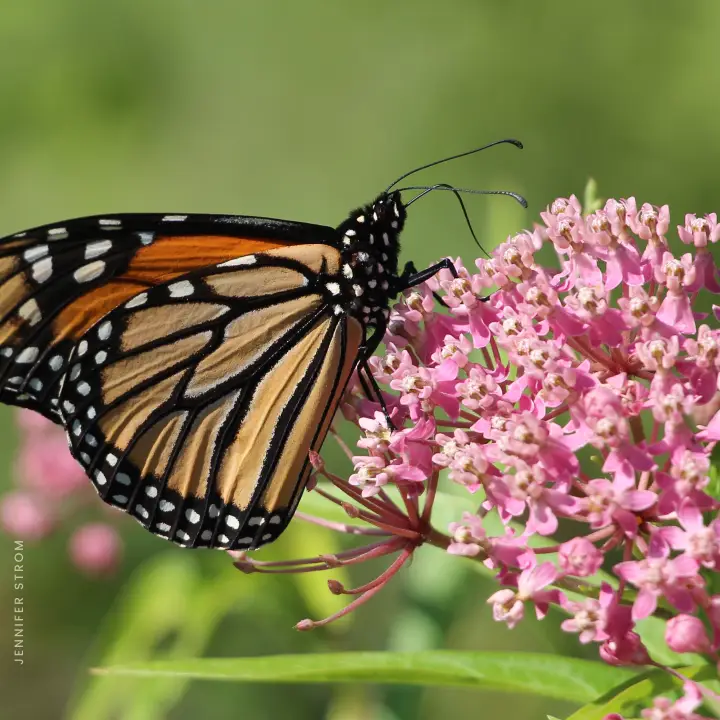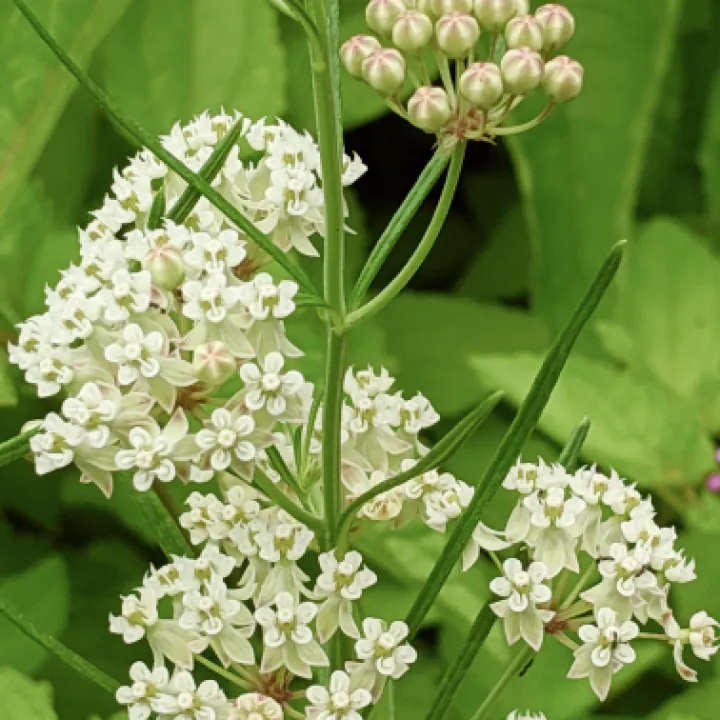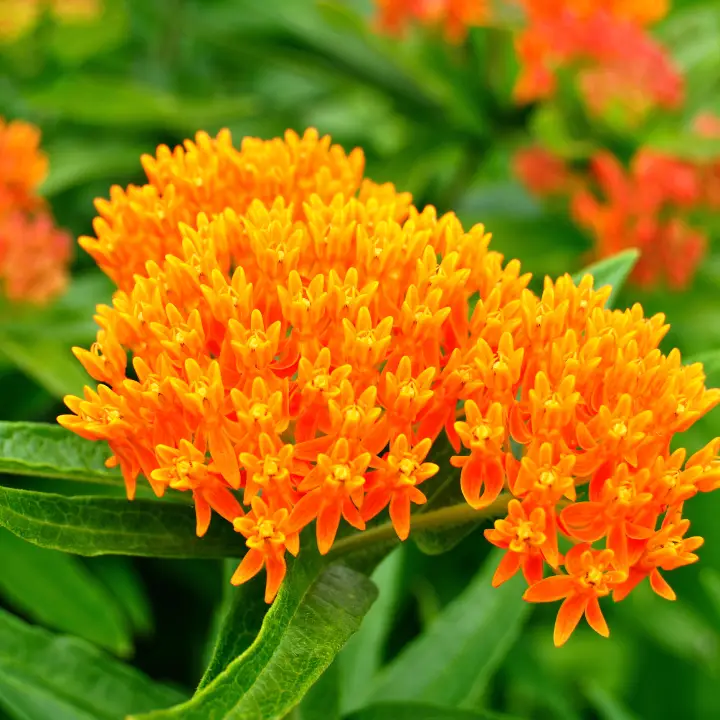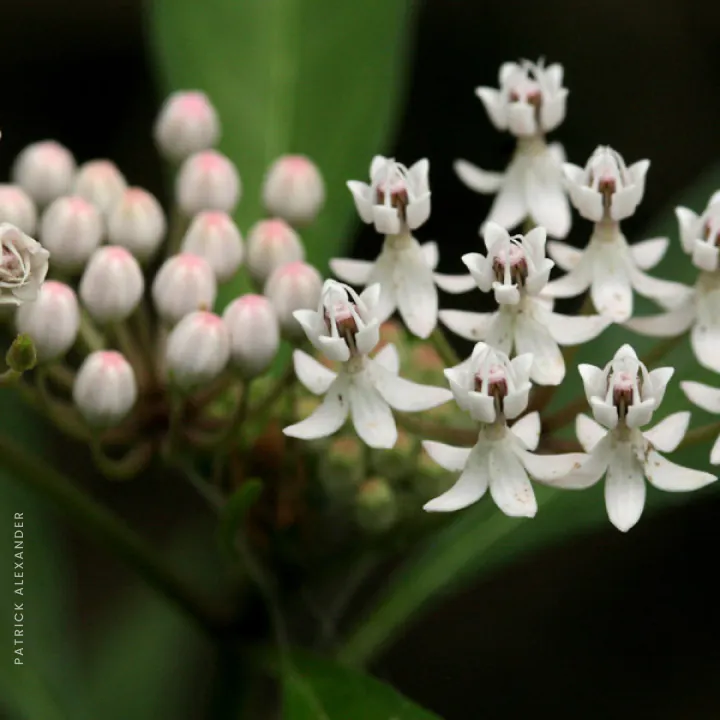It’s not a weed, and it doesn’t produce milk, but the humble milkweed is one of the most important plants you can have in your garden. This tough native plant grows just as well in North American wetlands as it does in fields and prairies. It is a host plant for monarch caterpillars and critical to growing the monarch butterfly population. While most butterfly species can feed on a variety of host plants, monarch caterpillars can only survive on a diet of milkweed.
Here are five milkweeds to add to your butterfly garden that will support monarch butterflies throughout their life cycle.
1. Swamp milkweed (Asclepias incarnata)
Swamp milkweed features vibrant pink blooms that attract pollinators, including monarch butterflies and native bees. As the name suggests, it thrives in wetter conditions and clay or mucky soil, making it ideal for rain gardens and wetlands. This milkweed blooms from June-October and grows up to 4 feet tall.
Swamp Milkweed
Asclepias incarnata
This host plant for monarch butterfly caterpillars, Swamp Milkweed (Asclepias incarnata), is abundant with small, rose-to-deep pink flowers.
2. Whorled milkweed (Asclepias verticillata)
Whorled milkweed is a resilient and versatile native plant, perfect for dry, sunny, and partly shaded areas. Its pale green-white hue and thin, whorled leaves create a delicate beauty in your garden. From May through September, this milkweed produces tiny, fragrant blooms that provide nectar for a variety of butterflies and bees, making it an essential addition to any pollinator-friendly garden. It grows between 1-3 feet tall and tolerates clay, sand, and rocky soils that may be challenging for other plants to thrive in.
Whorled Milkweed
Asclepias verticillata
This pale green-white milkweed, Whorled Milkweed (Asclepias verticillata) is a host plant for monarch caterpillars and ideal for dry, sunny or part shade areas.
3. Orange butterfly milkweed (Asclepias tuberosa)
Orange butterfly milkweed, also known as orange milkweed or butterfly weed, is a must-have for any butterfly enthusiast looking to support monarchs and other critical wildlife species. This stunning native plant features clusters of vibrant yellow to bright orange flowers, providing a splash of color that attracts monarchs, queen butterflies, and a host of other pollinators. Butterfly weed grows between 1 and 3 feet tall and blooms from June through September. With its compact, shrub-like structure, it's perfect for urban or suburban yards and even large containers.
Orange Butterfly Milkweed
Asclepias tuberosa
Orange Butterfly Milkweed (Asclepias tuberosa) is a host plant for monarch butterfly caterpillars and features clusters of yellow to bright orange flowers.
4. Snowy milkweed (Asclepias perennis)
Snowy milkweed, aka aquatic milkweed, is abundant with creamy white flowers tinged with soft pink, that sit in clusters on stalks with short narrow leaves. The flowers bloom from May through September. This milkweed grows 1-3 feet tall and is ideal for rain gardens and partly-shaded, moist environments in the South Eastern United States (Florida, Georgia, South Carolina, etc.).
Snowy / Aquatic Milkweed
Asclepias perennis
This host plant for monarch butterfly caterpillars, Snowy Milkweed (Asclepias perennis), is abundant with creamy white flowers.
5. Showy milkweed (Asclepias speciosa)
Showy milkweed is more manageable than common milkweed, with fragrant blooms, large oval shaped leaves and spiky pink flowers at the stems. It grows anywhere from 2 to 4 feet tall and blooms June though August, thriving in the sunny, dry climates of the Western U.S. (Colorado and New Mexico).
Showy Milkweed
Asclepias speciosa
The Showy Milkweed (Asclepias speciosa) is more manageable than common milkweed with large oval shaped leaves and spiky pink flowers at the stems.
Are there other native species of milkweed?
Yes! There are dozens of milkweed plants that are native to North America. Common milkweed (Asclepias syriaca) has large balls of pink or purplish flowers that have an attractive odor. The flowers bloom from June to August and it usually grows 3-5 feet, but can sometimes reach 8 feet!
There's also purple milkweed (Asclepias purpurascens) with rich magenta-purple flowers that bloom from May to July and antelope-horns milkweed (Asclepias asperula), also known as spider milkweed, with green seed pods that curve to resemble antelope horns. This species of milkweed has pale, greenish-yellow flowers, tinged maroon that bloom from March to October.
Looking for more? The National Wildlife Federation highlights more species of native milkweed in this article, "Twelve Native Milkweeds for Monarchs."
Is there a non-native milkweed plant?
Yes, tropical milkweed (Asclepias curassavica) is a non-native milkweed in North America that can become invasive. Also known as mexican butterfly weed, it is native to the American tropics. It doesn't go dormant like native milkweed and it's known to become contaminated by the Ophryocystis elektroscirrha parasite that can kill monarch and queen butterflies. It's commonly sold in garden centers and big box stores so make sure you avoid this one!
Creating a Bountiful Butterfly Garden with Milkweed
Adding any of these five native milkweeds to your garden not only enhances its beauty but also supports local wildlife and promotes biodiversity. These low-maintenance, resilient plants provide crucial resources for pollinators and other beneficial insects, making your garden a haven for wildlife. Embrace the elegance and ecological benefits of swamp milkweed, whorled milkweed, orange butterfly milkweed, snowy milkweed, and showy milkweed to create a vibrant, wildlife-friendly garden. Visit the Garden for Wildlife online store to find these and other native plants perfect for your garden.






